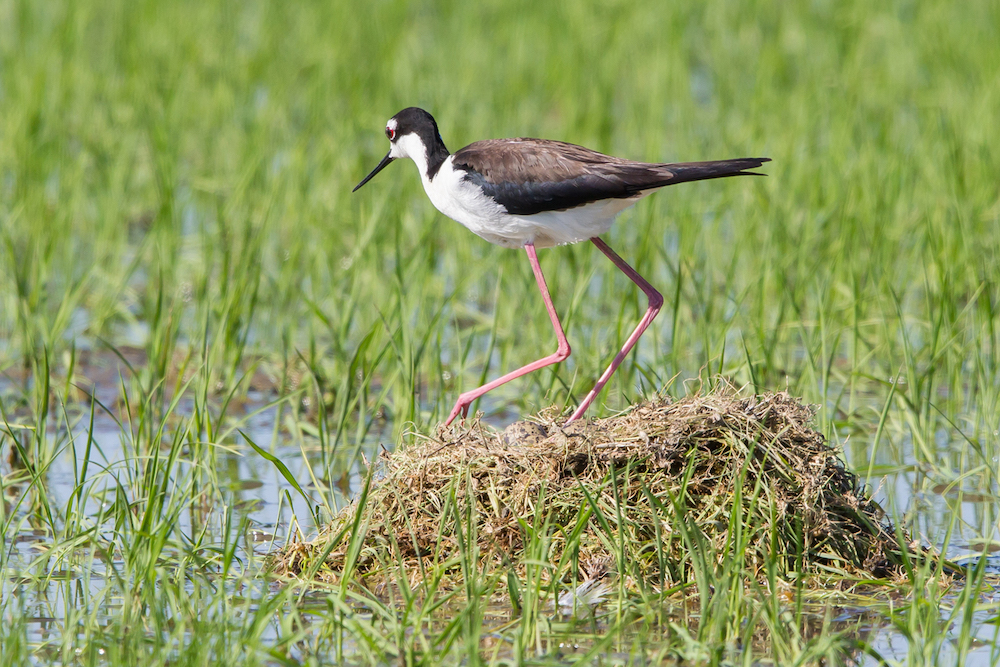Nesting Shorebirds and Waterbirds
By Luke Matthews
When most people think about bird nests they think of trees; however, it is important to remember that there are a large number of species that nest on the ground or build mounds over water. In addition to waterfowl American Avocets, American Bitterns, Black-necked Stilts, Black Terns, and Killdeer are common ground nesting birds in the Sacramento Valley. While all of these species nest on the ground they use different nesting methods to protect and camouflage their nests.

American Bitterns and Black Terns build their nests in dense vegetation usually over water or on ground but in close proximity to water. Bittern nests are typically made from a pile of branches and vegetation while Tern nests are typically built on floating mats of vegetation or mud mounds. Both species rely heavily on camouflage from vegetation to protect and hide the nests and chicks after hatching. Chicks develop rapidly but remain in the nest or hidden in near-by vegetation and are fed by the parents until they are able to fly or fend for themselves. This period typically lasts for about 4 weeks.

American Avocet and Black-necked Stilt build nests on bare ground in close proximity to water, black-necked stilts will often build their nests on mounds over water. Their nests are typically no more than an indent in the mud and can be lined with pebbles or grass. Adults of both species distract predators with elaborate displays and calling to draw any potential threats way from the nest. Chick are fully precocial meaning they can leave the nest and feed themselves shortly after hatching. Despite the fact that chicks are able to feed themselves adults still tend to young until they are able to fly.
Killdeer build nests directly on the ground without any vegetative cover. Nests are not always near water and are no more than a shallow depression in the dirt but are often lined with pebbles. Killdeer use similar displays to distract predators as Avocets and Stilts. Chicks are similar to other precocial shorebirds leaving the nest and feed themselves immediately after hatching.

Driving through rice county in the summer is something I look forward to every year. As the rice begins to sprout through the water, you will notice nesting shorebirds, waterbirds, and their young taking advantage of the fresh emergent vegetation.
Luke Matthews is the Wildlife Programs Manager for the California Rice Commission






